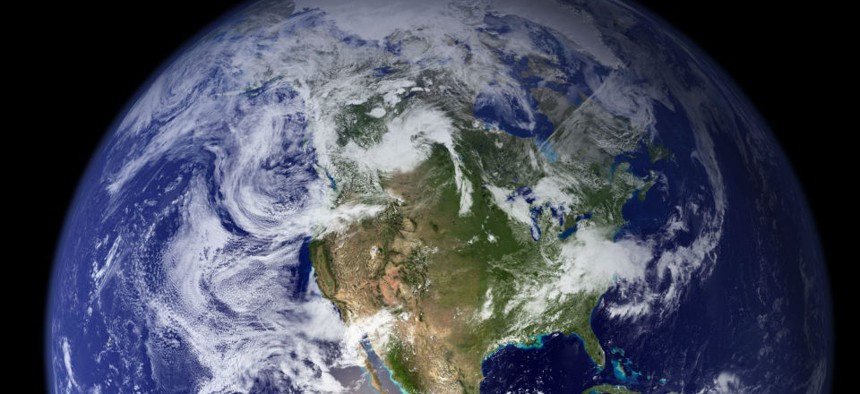NASA Taps Citizen-Scientists to Find Novel Ways to Use Earth Science Datasets

NASA/AP
The space agency hopes to get the public's help in figuring out innovative ways to use climate and Earth science datasets.
NASA is well known as an innovator that employs some of the smartest people alive. This week, however, the agency announced two related Earth science challenges designed to take ideas from a much large source: the public.
The challenges give citizens a chance to provide NASA with new ways to make use of the extensive datasets its Earth science satellites capture, much of which are available to the public through the Open NASA Earth Exchange, or OpenNEX. OpenNEX is a data, supercomputing and knowledge platform hosted on the Amazon Web Services cloud, where academics, developers and users can search through a massive collection of climate and Earth science datasets. NASA already collects the data, but the public could help the agency better figure out to do with it.
“OpenNEX provides the general public with easy access to an integrated Earth science computational and data platform,” said Rama Nemani, principal scientist for the NEX project at NASA's Ames Research Center in Moffett Field, California. “These challenges allow citizen-scientists to realize the value of NASA data assets and offers NASA new ideas on how to share and use that data.”
The challenges come in two phases. The first is the ideation stage, which runs from July 1 through Aug. 1. It will offer as much as $10,000 in awards for ideas that lead to “novel uses of the datasets.”
The second aspect is the builder phase and begins in August. It will build off the ideas generated during the ideation stage and will offer between $30,000 and $50,000 in awards for the development of applications or algorithms that promote climate resilience using OpenNEX datasets.
NASA will announce the winners in December. The OpenNEX challenges also address policy mandates on big data, open data and climate data from the Obama administration, but bringing innovation from outside the agency is likely where its biggest efforts will lie.
Speaking at the Amazon Web Services symposium in Washington, D.C., on Wednesday, Tsengar Lee, program manager in the Earth Science Division of the Science Mission Directorate at NASA Headquarters, said building the data simply isn’t enough: The agency wants to maximize its uses.
“The expectation was if you build the data, they will come, but that was not the case,” Lee said.
To educate citizen-scientists on how datasets on OpenNEX can be used, NASA has created a series of online lectures and modules. Those materials, as well as other information on registering for the challenges, are available here.





